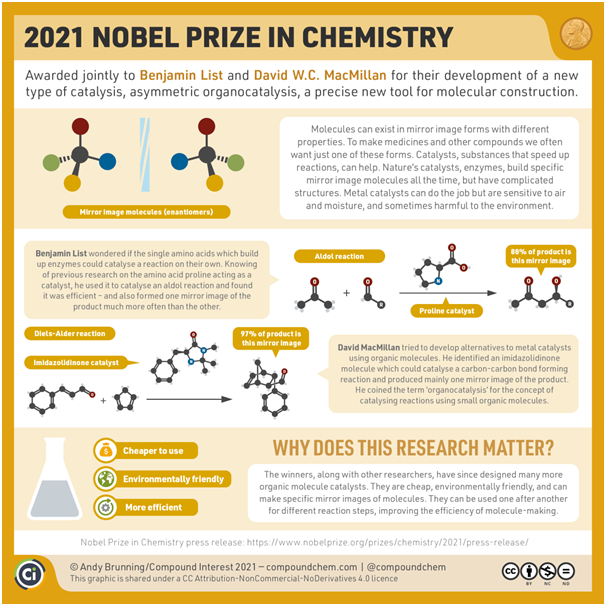aditya
6:03 pm
Why in news?
Chemistry Nobel 2021 was awarded to German scientist Benjamin List and Scotland-born scientist David W.C. MacMillan who independently developed a new way of catalysis – asymmetric organocatalysis in 2000.
What are catalysts?
- When two or more compounds react to form new compounds, the process is often aided by other chemicals that do not change themselves, but help speed up the reaction. Such chemicals are called catalysts.
- Till around 2000, only two kinds of chemicals were known to act as effective catalysts - heavier metals and enzymes.
- Heavier metals - Heavier metals are expensive, difficult to mine, and toxic to humans and the environment.
- Also traces remain in the end product affecting the purity of compound like medicines.
- Metals required an environment free of water and oxygen, which was difficult to ensure on an industrial scale.
- Enzymes- Enzymes work best when water is used as a medium for the chemical reaction but that is not suitable for all kinds of chemical reactions.
What is asymmetric organocatalysis?
- Substances having same chemical composition and molecular formula but different properties are known as isomers.
- Two molecules could be exactly the same, except that they are mirror images of each other which are often referred as left-handed or right-handed molecules.

- List and MacMillan discovered that by using a natural compound like an amino acid as a catalyst, only one specific mirror image of the end-product could be obtained. This was named as asymmetric catalysis.
Why is the discovery so significant?
